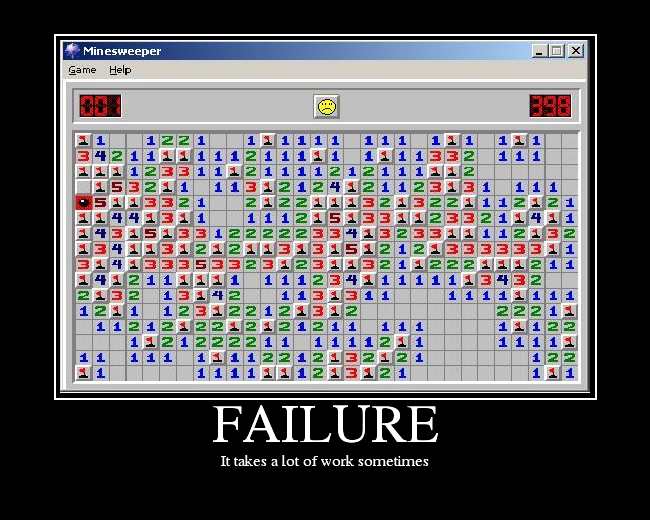What makes a game a "failure?"

The Walgreens down the street from me sold a Wii game that consisted of go-cart racing with Santa’s elves. It had a goal, and it accomplished it. That game might not be fun to anyone over the age of ten, but it’s not a failure. Consider a game like L.A. Noire, however. That’s a failure. Or so Susan Arendt says:
If L.A. Noire had been a bold experiment, it might have succeeded, but it was actually several bold experiments fighting for dominance. The result was a snooze of a gumshoe sim with some gobsmacking tech running it. The facial animation was so good that it was actually distracting at times. I’d be so caught up in trying to remember where I’d seen the actor portraying whatever witness I was interrogating that I’d forget to listen to his statement. (By the way, the answer is nearly always Mad Men.) L.A. Noire, more than any other game before it, gave us hope that the uncanny valley might someday be conquered, and we’d finally be able to relate to our onscreen companions as though they were people, not merely peoplesque amalgamations of Botox and rubber.
She later gives the same treatment to Rise of Nightmares, the technically innovative but ultimately disappointing Kinect-based zombie survival game, offering:
It’s a great concept that was pretty much doomed to failure from the beginning.
For horror to work, you have to completely give yourself over to whatever absurd premise you’re being asked to swallow. An unkillable psycho in a Captain Kirk mask obsessed with offing babysitters? Sure, ok. A town apparently cut off from reality, shrouded in fog, jumping between realities and full of faceless nurses? Totally; why not? If you can’t completely immerse yourself in the fiction, you can’t really let yourself be scared by whatever boogeyman is being pointed at you, because some part of you knows that you’re still safe and sound in the reality of your living room.
So, hey. These games failed. But at least they went for it.
-Drew Millard



